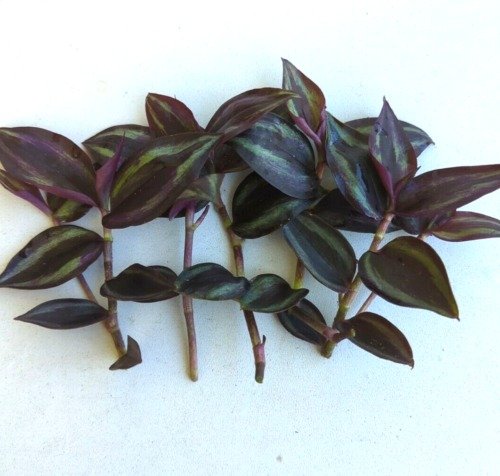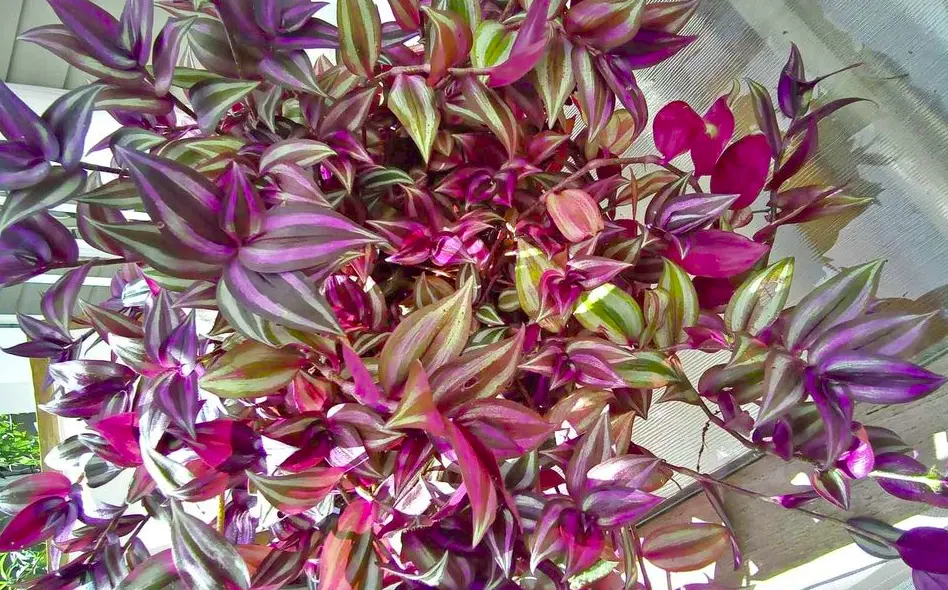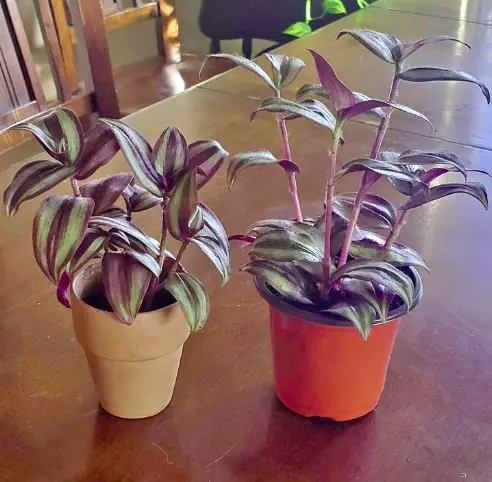Tradescantia zebrina or Wandering Jew is a crawling succulent plant characteristic of its zebra-outlined attractive magenta foliage decked with brilliant silvery horizontal pink, white or purple crosses; popularly grown as outdoor and indoor decorative garden plants.
They have been known by several aliases, including Silver Inch Plant, bladderwort, or Wandering dude, because of its ability to keep ‘wandering’ all over the available spaces if it’s not properly pruned.
Wandering Jew is a delight to propagate because of its low maintenance requirements; even if you’re a newbie, propagating Wandering Jew pots will certainly help improve your gardening experience.
Propagating Wandering Jew Plants

Wandering Jew plants are well known for their natural prying tendencies. They will invade and sprawl all over your old garage truck, an abandoned basketball court, the hoops, and even the dishwasher if left unattended for a while; it’s important to keep an eye on them.
Propagating Wandering Jew plants is mostly by stem cuttings. They’re not so difficult to propagate, and anyone can get it right the first time.
Propagating Wandering Jew by Stem Cuttings
Make your cuttings from a well-grown stem with fully developed leaves and nodes. Your selected stem should have about 2-3 leaves attached at its tip.
Using a clean, sharp knife or gardening scissors, make a 45° cut off the stem of the mother plant at a point just below a node or bud. Your cuttings should be at least 3 inches long, and you can divide a cutting into smaller sizes that can be rooted.

Ensure each stem cutting has its foliage of 2-3 leaves at the top and one or two nodes or outgrowths. Root development unusually happens on a stem cutting from the nodes. You should remove the leaves near the cut edges of the cuttings, leaving only those at the top.
Your cuttings will need to heal before rooting. Place them on a dry, warm surface with indirect sunshine for a day or two until the cut edges get fully calloused with a thin cotton film forming on them.
It would help if you only rooted stem cuttings that are properly healed for best results.
Rooting Your Wandering Jew Stem Cuttings in Water
Prepare a vase or glass jar and fill it with water until it is half full; then, place your cuttings into the filled jar, position the set-up behind a well-lit window, and watch it daily for root development.
You should change the water in the rooting vase weekly or when it gets cloudy inside. Your cuttings will be fully rooted in 2-3 weeks.
Ensure you save time transplanting the cuttings into a Potting medium once the roots are 2-4 inches long; waiting too long will result in rotting of the stems and failure of the cuttings when transplanted.
Rooting Your Stem Cuttings in a Potting Medium

I prefer to root my wandering Jew cuttings in a pot with my homemade lightweight potting mix; the chances of success are much higher, and the process is reasonably faster.
After the cuttings are fully calloused, get your rooting pot and pour in the Potting Mix till it’s almost full.
If you prefer to use rooting hormones, dip the cuttings’ calloused tips in water and then in the rooting hormone powder. If you don’t have that, natural honey can serve the same purpose effortlessly.
Next, make tiny holes on the potting surface about 1 inch deep by the edges and insert your calloused cuttings into the holes.
Strengthen the plants with more potting soil mix and place the pot behind your south-facing windows for maximum sunshine.
Only water the pot when the surface soil looks dry and crispy; your cuttings should begin to root within 1-3 weeks.
Sunlight Requirements for a Wandering Jew Pot

They’re native to the sunny tropical and temperate vegetation of Colombia, Central America, the Caribbean Islands, Africa, Asia, Oceania, Australia, and South America, wherever there is at least 14 hours of daily sunshine.
They enjoy spreading their colonies under the brilliant sunshine but will continue to do their best when sunlight penetration is low. Eventually, a dimly lit environment will negatively affect their overall growth.
They can take the direct radiation of a bright sunny morning, but only for a few hours; they should be propagated behind a window or under a shade where they get as much indirect sunshine as possible.
Pruning your Wandering Jew Plants
Wandering Jew plants will ‘wander’ away beyond your wildest imaginations if they’re not regularly pruned. Pruning is an important skill every garden propagator must learn over the years. But not just pruning; pruning at the right time makes all the difference.
One of the reasons why you should propagate your Wandering Jew pots is to limit their spread, keep them looking young and attractive, and grow new pots for new locations.
Older Wandering Jew plants should be pruned in their growing season, usually between early spring and late summer, to stop the pots from becoming leggy.
Best Potting Medium to Propagate Wandering Jews
They’re best propagated in a quick-draining commercial succulent or cactus potting mix. They thrive in warm, moist soil potting with an atmospheric temperature range between 55°F to 70°F (12°C to 21°C). It’s best to use wide and not-so-deep pots because they’re shallow rooters.
Wandering Jews aren’t so fuzzy about soil mix requirements; a regular cactus mix, succulents soil mix, or even a normal potting mix will provide the right nutrients for their propagation.
Watering your Wandering Jew Pots
They require moist potting soil to flourish effortlessly. Ensure their pot is watered thoroughly in each watering cycle.
During each cycle, water the pot and allow the excess water to run off completely through the drain holes. The plant won’t need watering again until the next cycle, when the topsoil later becomes dry and crumbly. Only water it if the top 1 inch of the soil is dry.
They have a high tolerance for excess water, but only for a short time. When continuously left in excess water, the roots begin to rot, and the leaves suffer discoloration. A great practice is to water the pots from the bottom to keep the leaves fresh and dry.
Bottom watering means dropping the pot in a bowl filled with water for 10 seconds and then lifting it before placing it on a flat surface for the excess water to drain completely.
Can I Propagate Wandering Jew Plants from Leaf Cuttings?
There’s no guarantee that their leaf cuttings can be propagated into new plants, because their cuttings need a node or buds to grow a new plant.
It’s best to stick with their rooted stem cuttings for excellent results.
Garden propagators generally especially like Wandering Jew plants due to their fast proliferation rate and charming leaves. Some medicinal benefits include treating high blood pressure, uterine issues, and tuberculosis; it is prepared natively as a Mexican medicinal beverage.
They are perfect household decorative plants and can serve as excellent coverings for cold floors during winter when they form a dense colony of herbaceous mats.
Most are particularly glabrous, but some appear to have thick hair-like coverings, and they are easy to move around when relocating them because their runners are lightly attached to the floors.
